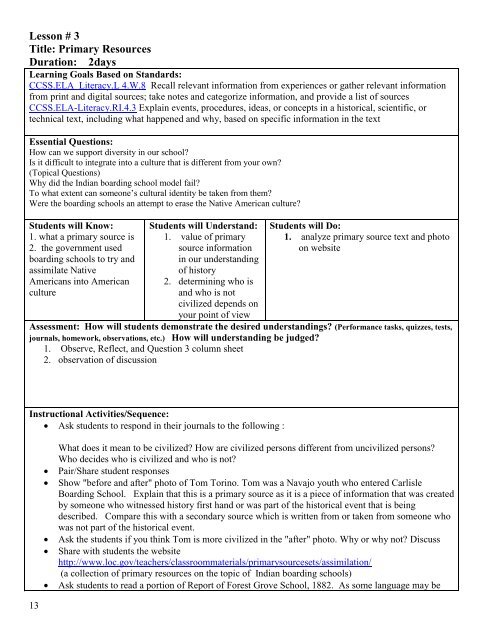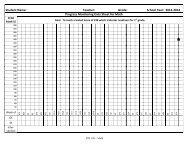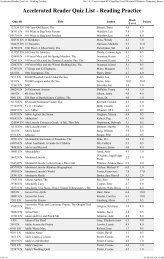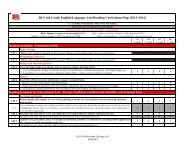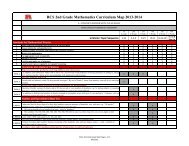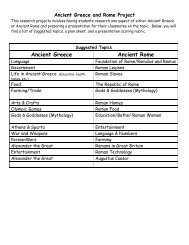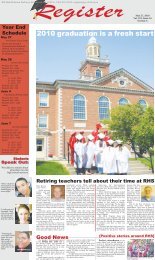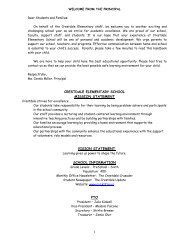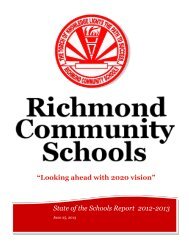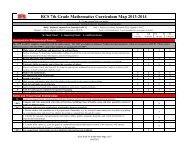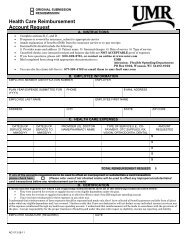Ubd Unit Indian Boarding Schools.pdf - Richmond Community Schools
Ubd Unit Indian Boarding Schools.pdf - Richmond Community Schools
Ubd Unit Indian Boarding Schools.pdf - Richmond Community Schools
Create successful ePaper yourself
Turn your PDF publications into a flip-book with our unique Google optimized e-Paper software.
Lesson # 3<br />
Title: Primary Resources<br />
Duration: 2days<br />
Learning Goals Based on Standards:<br />
CCSS.ELA_Literacy.L 4.W.8 Recall relevant information from experiences or gather relevant information<br />
from print and digital sources; take notes and categorize information, and provide a list of sources<br />
CCSS.ELA-Literacy.RI.4.3 Explain events, procedures, ideas, or concepts in a historical, scientific, or<br />
technical text, including what happened and why, based on specific information in the text<br />
Essential Questions:<br />
How can we support diversity in our school?<br />
Is it difficult to integrate into a culture that is different from your own?<br />
(Topical Questions)<br />
Why did the <strong>Indian</strong> boarding school model fail?<br />
To what extent can someone’s cultural identity be taken from them?<br />
Were the boarding schools an attempt to erase the Native American culture?<br />
Students will Know:<br />
1. what a primary source is<br />
2. the government used<br />
boarding schools to try and<br />
assimilate Native<br />
Americans into American<br />
culture<br />
Students will Understand:<br />
1. value of primary<br />
source information<br />
in our understanding<br />
of history<br />
2. determining who is<br />
and who is not<br />
civilized depends on<br />
your point of view<br />
Students will Do:<br />
1. analyze primary source text and photo<br />
on website<br />
Assessment: How will students demonstrate the desired understandings? (Performance tasks, quizzes, tests,<br />
journals, homework, observations, etc.) How will understanding be judged?<br />
1. Observe, Reflect, and Question 3 column sheet<br />
2. observation of discussion<br />
Instructional Activities/Sequence:<br />
Ask students to respond in their journals to the following :<br />
<br />
<br />
<br />
<br />
<br />
What does it mean to be civilized? How are civilized persons different from uncivilized persons?<br />
Who decides who is civilized and who is not?<br />
Pair/Share student responses<br />
Show "before and after" photo of Tom Torino. Tom was a Navajo youth who entered Carlisle<br />
<strong>Boarding</strong> School. Explain that this is a primary source as it is a piece of information that was created<br />
by someone who witnessed history first hand or was part of the historical event that is being<br />
described. Compare this with a secondary source which is written from or taken from someone who<br />
was not part of the historical event.<br />
Ask the students if you think Tom is more civilized in the "after" photo. Why or why not? Discuss<br />
Share with students the website<br />
http://www.loc.gov/teachers/classroommaterials/primarysourcesets/assimilation/<br />
(a collection of primary resources on the topic of <strong>Indian</strong> boarding schools)<br />
Ask students to read a portion of Report of Forest Grove School, 1882. As some language may be<br />
13


